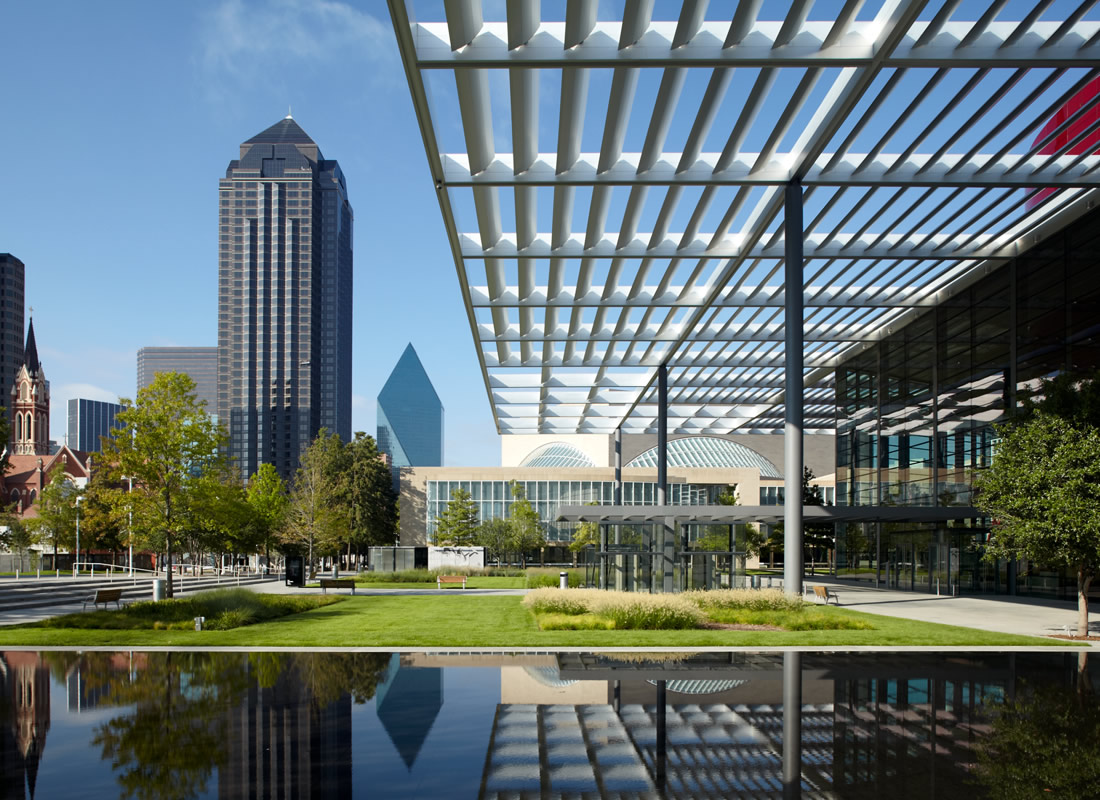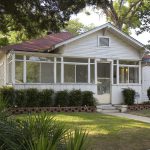The City of Dallas Office of Arts and Culture is the custodian of nineteen city-owned cultural facilities, where a wide variety of arts and cultural programs are offered for citizens and visitors. These facilities consist of many of our community’s most important cultural venues, and when combined, represent more than 1.5 million square feet of space dedicated to arts and cultural functions in our community.
The OAC directly operates seven of these facilities: two performing arts venues (Majestic Theatre and Moody Performance Hall), four cultural centers (Bath House Cultural Center, Latino Cultural Center, Oak Cliff Cultural Center, and South Dallas Cultural Center), and the Juanita Craft Civil Rights House.
Additionally, the OAC manages twelve other cultural facilities through private/public partnerships with non-profit arts and cultural organizations with long-term management or operation agreements approved by City Council.
OAC Managed Venues
| Moody Performance Hall (formerly Dallas City Performance Hall) |
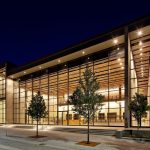 The last of the four venues in the Dallas Center for the Performing Arts complex, Moody Performance Hall was designed by the iconic American architectural firm SOM (Skidmore Owings Merrill). The 40,000 square foot initial phase includes a 750-seat hall suitable for music, dance and theater performances and was designed specifically to serve as the performing home for more than 100 small and mid-size cultural organizations in the Dallas Arts District. The last of the four venues in the Dallas Center for the Performing Arts complex, Moody Performance Hall was designed by the iconic American architectural firm SOM (Skidmore Owings Merrill). The 40,000 square foot initial phase includes a 750-seat hall suitable for music, dance and theater performances and was designed specifically to serve as the performing home for more than 100 small and mid-size cultural organizations in the Dallas Arts District. |
| Majestic Theatre |
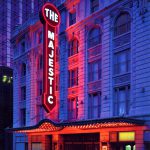 One of the most elegant and historic performing arts spaces in the Southwest, the historic Majestic Theatre is managed by the City of Dallas Office of Cultural Affairs. Built in 1921, the Majestic hosts a variety of concerts, performing arts, comedy and corporate events through the year presented by national and local artists, promoters and nonprofit arts organizations. One of the most elegant and historic performing arts spaces in the Southwest, the historic Majestic Theatre is managed by the City of Dallas Office of Cultural Affairs. Built in 1921, the Majestic hosts a variety of concerts, performing arts, comedy and corporate events through the year presented by national and local artists, promoters and nonprofit arts organizations. |
| Bath House Cultural Center |
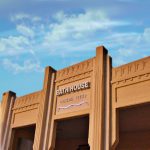 The 10,640 sq. ft. facility was designed by Carson & Linskie. Located on the shores of White Rock Lake, the Bath House is one of the earliest Art Deco buildings in Texas and was originally built by the Dallas Park Board. It was renovated into a cultural center in 1981. The 10,640 sq. ft. facility was designed by Carson & Linskie. Located on the shores of White Rock Lake, the Bath House is one of the earliest Art Deco buildings in Texas and was originally built by the Dallas Park Board. It was renovated into a cultural center in 1981. |
| Latino Cultural Center |
 Designed by renowned Mexican architect and AIA Gold Medal recipient Ricardo Legorreta, the Latino Cultural Center opened its doors in 2003. The 27,000 sq. ft. facility was built through a public/private partnership and features a visual arts gallery, an outdoor plaza and courtyards, the 300-seat Oak Farms Dairy Performance Hall, and supporting spaces. Designed by renowned Mexican architect and AIA Gold Medal recipient Ricardo Legorreta, the Latino Cultural Center opened its doors in 2003. The 27,000 sq. ft. facility was built through a public/private partnership and features a visual arts gallery, an outdoor plaza and courtyards, the 300-seat Oak Farms Dairy Performance Hall, and supporting spaces. |
| Oak Cliff Cultural Center |
 A 5,000 sq. ft. storefront on Jefferson Avenue, adjacent to the historic Texas Theater, the OCCC is a community arts center with space for dance and music classes and a gallery/multipurpose room for exhibitions, lectures and other cultural events. The OCCC inaugurated in August 2010. A 5,000 sq. ft. storefront on Jefferson Avenue, adjacent to the historic Texas Theater, the OCCC is a community arts center with space for dance and music classes and a gallery/multipurpose room for exhibitions, lectures and other cultural events. The OCCC inaugurated in August 2010. |
| South Dallas Cultural Center |
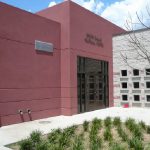 This 24,000 sq. ft. facility first opened in 1988; after an extensive renovation and expansion, it reopened in 2008. Today, it features a 120-seat black box theater; a visual arts gallery; studios for dance, two-dimensional arts, ceramics, printmaking and photography; and a full service digital recording studio. Programs at the SDCC help inspire in both the young and old love of art from the African Diaspora. This 24,000 sq. ft. facility first opened in 1988; after an extensive renovation and expansion, it reopened in 2008. Today, it features a 120-seat black box theater; a visual arts gallery; studios for dance, two-dimensional arts, ceramics, printmaking and photography; and a full service digital recording studio. Programs at the SDCC help inspire in both the young and old love of art from the African Diaspora. |
| Juanita Craft Civil Rights House |
The 1300 sq. ft. one-story frame house was the home of Juanita Craft, one of Dallas´ most significant civil rights figures and the second African American woman to serve on the Dallas City Council. Programming at the Juanita Craft Civil Rights House is coordinated by the South Dallas Cultural Center. |
City-Owned, Partner-Managed Venues
| African American Museum* |
| Designed by Dallas architect Arthur Rogers in 1993, the 15,000 sq. ft. facility was built through a public/private partnership and is the only museum in the Southwestern United States devoted to the preservation and display of African American artistic, cultural and historical materials. |
| Annette Strauss Square |
| One of the four venues of the AT&T Performing Arts Center in the Dallas Arts District, Strauss Square was designed by the internationally renowned firm Foster + Partners. Strauss Square was dedicated in September 2010 and hosts a variety of outdoor events ranging from concerts to theatrical and dance performances to multi-day festivals, accommodating audiences of up to 2,000 in a serene open-air setting. |
| Black Academy of Arts & Letters |
| Housed in the original 1957 section of the Dallas Convention Center that was designed by noted Dallas architect George Dahl, TBAAL has an 1,800 seat theater and a 250 seat café theater, plus gallery, gift shop, meeting rooms and administrative and support spaces. |
| Dallas Black Dance Theatre |
| Built in 1930 as the city´s only YMCA for the African-American community, the 32,000 sq. ft. building was designed by Dallas architects Ralph Bryan and Walter Sharp. It served as a YMCA until 1970, when a new facility was built in Oak Cliff and the historic building was acquired by the private sector. Dallas Black Dance Theatre purchased the building in 1999 and in 2005 transferred the deed to the City of Dallas as part of a public/private partnership to renovate the facility. After an extensive renovation, the building reopened in 2008 as the Arts District home of Dallas Black Dance Theatre. |
| Dallas Heritage Village at Old City Park |
| This 13-acre village is a living history museum portraying life in North Texas from 1840-1910. Located in what was Dallas´ first public park, the 38 historic structures on the site have been relocated from sites around North Texas. The facility is managed by the Dallas County Heritage Society. |
| Dallas Museum of Art |
| The 528,000 sq. ft. facility was designed by AIA Gold Medal recipient Edward Larrabee Barnes. The building anchors the Dallas Arts District´s western side and first opened in 1984, with a subsequent addition opening in 1993. The facility was funded through a public/private partnership between the City of Dallas and the Dallas Museum of Art, a nonprofit corporation. |
| Perot Museum of Nature & Science (Fair Park – Museum of Natural History*) |
| Designed by Mark Lemmon and Clyde Griesenbeck, the 32,875 sq. ft. building was completed in 1936. It was the first of the cultural facilities that George Dahl envisioned as the legacy of the 1936 Texas Centennial Exposition. |
| Kalita Humphreys Theater |
The 33,000 sq. ft. theater was designed by American architectural legend Frank Lloyd Wright and is the only stand-alone theater designed by Wright that was built. It was built by the Dallas Theater Center in 1959 and transferred to City ownership in the 1970s. The Kalita has been in continuous operation since 1959 as the home of the Dallas Theater Center. Master Plan Executive Summary (12/30/2010) |
| Heldt Administration Building at Kalita Humphreys Theater |
| The 30,000 sq. ft. facility provides office, rehearsal and costume shop space to support the theatrical activities at the Kalita Humphreys Theater. The Heldt was designed by Dallas architect Art Rogers and completed in 1990. |
| Morton H. Meyerson Symphony Center |
| The 400,000 sq. ft. facility was designed by Pritzker Prize winning architect I.M. Pei. Located at the center of the Dallas Arts District, the Meyerson opened in 1989 and is widely considered one of the finest music halls in the world, celebrated for both its elegant design and the masterful quality of the acoustics. The facility was funded through a public/private partnership between the City of Dallas and the Dallas Symphony Association, a nonprofit corporation. Learn more here. |
| Music Hall at Fair Park* |
| The 75,300 sq. ft. facility is the largest enclosed performing arts venue in Dallas, with 3,420 seats. Designed by Dallas architects Lang & Witchell in 1925, it was expanded by Jarvis Putty Jarvis in 1972. The historic building is the home of Dallas Summer Musicals. |
| Hall of State* |
| Designed by the San Antonio architectural firm of Adams & Adams in 1936, this 50,570 sq. ft. building was the centerpiece of the Texas Centennial Exposition. The historic building is the home of the Dallas Historical Society. |
| Sammons Center for the Arts |
| This historic landmark began its life in 1909 as the Dallas Water Utilities Turtle Creek Pump Station. In 1981, through the efforts of the cultural community, it was renovated through a public/private partnership into the Sammons Center for the Arts. |
| Elaine D. and Charles A. Sammons Park |
| One of the four venues of the AT&T Performing Arts Center in the Dallas Arts District, this 10-acre park was designed by landscape architect Michel Desvigne of Paris in collaboration with JJR of Chicago. Sammons Performance Park opened in October 2009. |
| Margot and Bill Winspear Opera House |
| One of the four venues of the AT&T Performing Arts Center in the Dallas Arts District, the Winspear Opera House was designed by Pritzker Prize winning architect Norman Foster and Foster + Partners. The 2,200 seat hall opened in October 2009. The Winspear is the home of The Dallas Opera, Texas Ballet Theater, a Broadway series, and other local and international performing arts presentations. |
| Dee and Charles Wyly Theatre |
| One of the four venues of the AT&T Performing Arts Center in the Dallas Arts District, the Wyly Theatre was designed by REX/OMA, Joshua Prince-Ramus (partner in charge) and Pritzker Prize-winning architect Rem Koolhaas. The 575 seat theatre opened in October 2009. The Wyly is the home of the Dallas Theatre Center, Dallas Black Dance Theatre, and Anita N. Martinez Ballet Folklorico. |
*Beginning on January 1, 2019, custodianship of City-owned cultural facilities at Fair Park was transferred from the Office of Cultural Affairs back to the Park and Recreation Department, and the management contracts for those venues have been assigned to Fair Park First, the City of Dallas’s Fair Park management partner. These venues are shown as a reference for the venues previously managed by the OAC.

